Dory Catch: What’s For Dinner?
When a dory boat leaves the sands of Cape Kiwanda and returns hours later riding a wave back to shore, it is not just coming home with a fresh catch. It is bringing back a story—one of hard work, tradition, and a deep connection to Oregon’s coastal waters.
So what exactly is on board these iconic flat-bottomed boats? And how does a day on the ocean turn into dinner on your plate?
A Wild, Seasonal Harvest
Oregon’s dory fleet is unique in the world of commercial fishing. These are small, independently owned vessels that launch directly from the beach into the open Pacific. Because dory boats are built for agility and speed rather than long hauls or massive capacity, they fish close to shore and return the same day. That means the seafood they bring in is as fresh as it gets.
The dory catch changes with the seasons, tides, and ocean conditions. Spring and summer often bring Chinook salmon, lingcod, rockfish, and black cod. During late summer and fall, albacore tuna become the main target, with dories heading farther offshore to chase these powerful fish. Crab, halibut, and greenling also appear in the mix depending on timing and permits.
Line-Caught, Small-Batch, Ocean-to-Table
Because of their size and the values of the fishermen who operate them, dory boats fish with care. Most fish are caught using hook-and-line methods, which reduce bycatch and minimize damage to the ocean floor. These are small-batch, high-quality fisheries. Every fish is handled individually, cleaned onboard, and iced for peak freshness. Some boats even deliver directly to local markets, restaurants, and community members the same day.
That level of attention shows up on the plate. Dory-caught rockfish has a clean, mild flavor perfect for grilling or fish tacos. Lingcod is prized for its flaky texture and occasional blue-green flesh. Albacore tuna from dory boats is often sashimi-grade, with high oil content and a rich, buttery flavor.
Supporting Local, Sustainable Seafood
When you buy dory-caught fish, you are doing more than choosing something delicious. You are supporting a small-scale, sustainable fishery that takes pride in doing things the right way. The dory fleet operates under strict quotas and licensing requirements, with each boat responsible for tracking its catch and minimizing environmental impact.
These fisheries are also part of the cultural fabric of Pacific City. Many dory fishermen are second or third generation. The knowledge they bring to the work—from weather patterns to fish behavior—is not found in a manual. It is passed down over years spent watching the water.
How to Find Dory-Caught Seafood
Depending on the season and availability, dory-caught fish can be found at farmers markets, local seafood shops, or directly from the boat. Some dorymen sell from their trucks in town after a day on the water. Others supply nearby restaurants that feature fresh, local seafood on their menus. Keep an eye out for tags or signs that say “dory-caught” or “Pacific City landings,” and don’t be afraid to ask where your fish came from.
A Taste of the Oregon Coast
Dinner from the dory fleet is more than a meal. It is a chance to eat in rhythm with the coast. It is seafood that comes with a sense of place, a splash of sea spray, and a story worth telling. Whether you are enjoying grilled albacore on a summer night or a pan-fried fillet of lingcod in early spring, you are tasting the best of what Oregon’s ocean has to offer—brought to shore by the hands of those who know it best.
Do you have a story to tell?
We’re gathering stories that shaped the shore.
Add yours to help preserve the history, culture, and spirit of the dory fleet.

